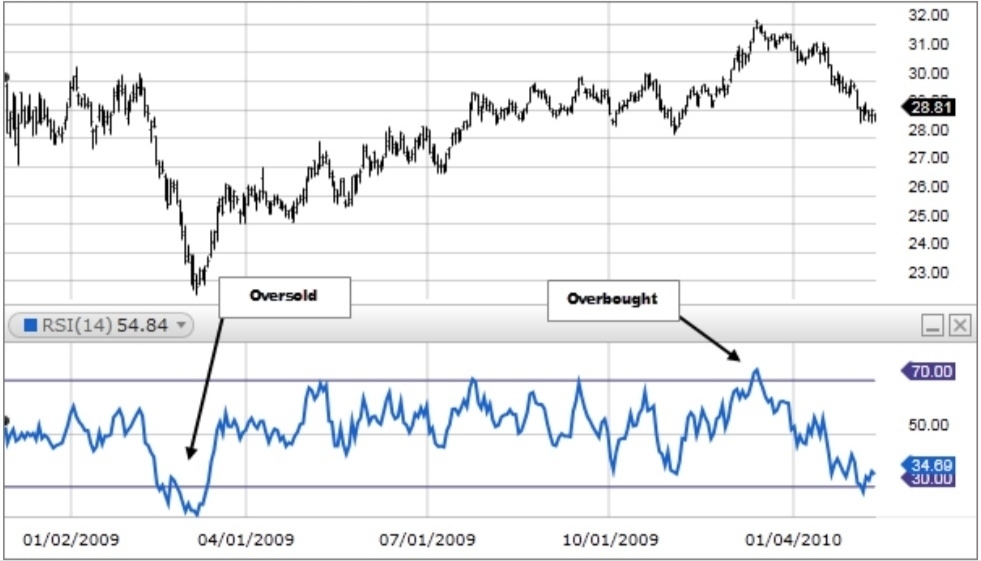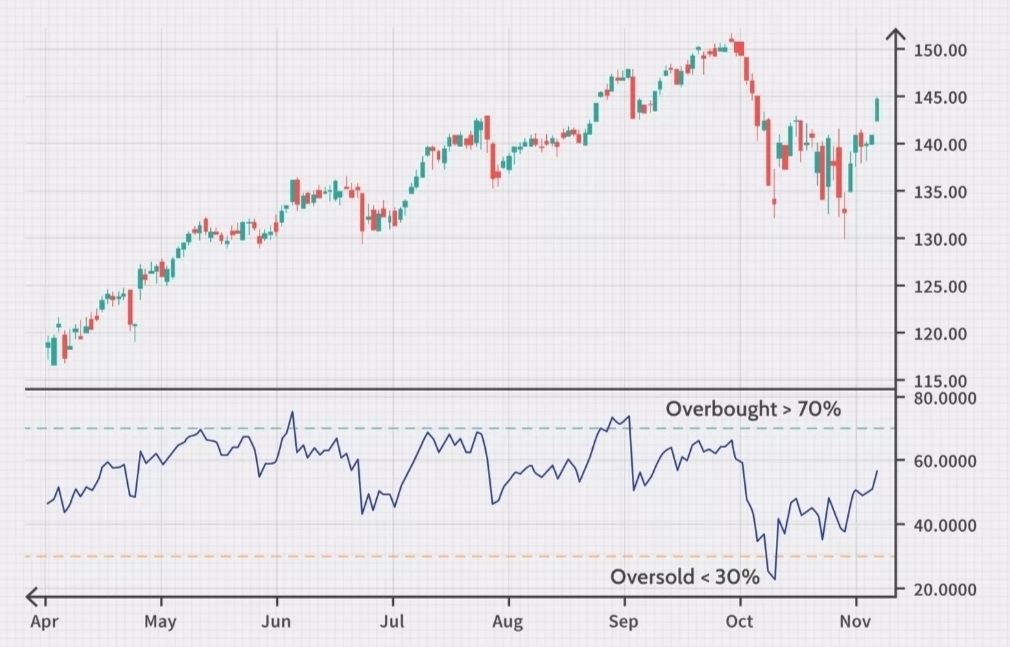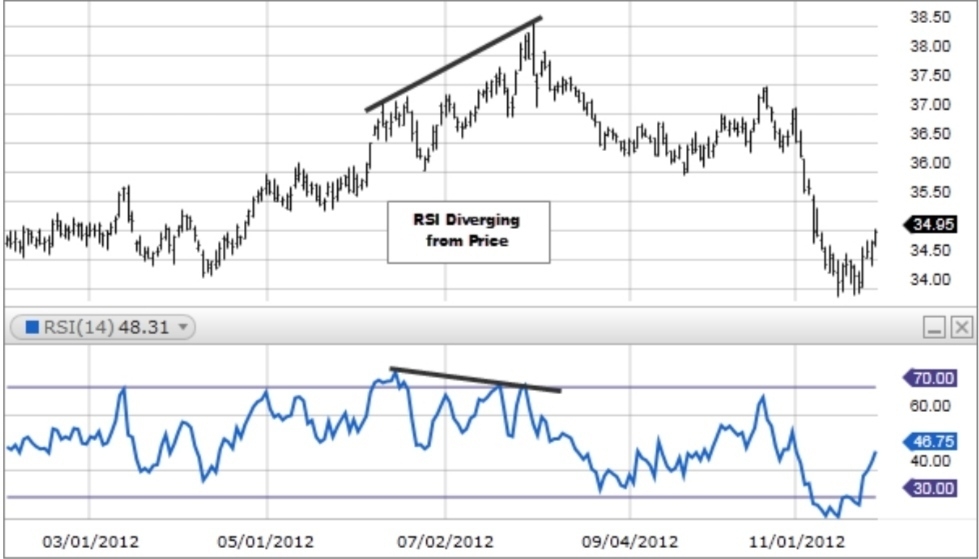Relative Strength Index (RSI)
The Relative Strength Index (RSI), developed by J. Welles Wilder, is a momentum oscillator that measures the speed and change of price movements. The RSI oscillates between zero and 100. Traditionally the RSI is considered overbought when above 70 and oversold when below 30. Signals can be generated by looking for divergences and failure swings. RSI can also be used to identify the general trend.
How this indicator works
1. RSI is considered overbought when above 70 and oversold when below 30. These traditional levels can also be adjusted if necessary to better fit the security. For example, if a security is repeatedly reaching the overbought level of 70 you may want to adjust this level to 80.
Note: During strong trends, the RSI may remain in overbought or oversold for extended periods.
2. RSI also often forms chart patterns that may not show on the underlying price chart, such as double tops and bottoms and trend lines. Also, look for support or resistance on the RSI.
3. In an uptrend or bull market, the RSI tends to remain in the 40 to 90 range with the 40-50 zone acting as support. During a downtrend or bear market the RSI tends to stay between the 10 to 60 range with the 50-60 zone acting as resistance. These ranges will vary depending on the RSI settings and the strength of the security’s or market’s underlying trend.
4. If underlying prices make a new high or low that isn't confirmed by the RSI, this divergence can signal a price reversal. If the RSI makes a lower high and then follows with a downside move below a previous low, a Top Swing Failure has occurred. If the RSI makes a higher low and then follows with an upside move above a previous high, a Bottom Swing Failure has occurred.
Disclaimer: Investing carries risk. This is not financial advice. The above content should not be regarded as an offer, recommendation, or solicitation on acquiring or disposing of any financial products, any associated discussions, comments, or posts by author or other users should not be considered as such either. It is solely for general information purpose only, which does not consider your own investment objectives, financial situations or needs. TTM assumes no responsibility or warranty for the accuracy and completeness of the information, investors should do their own research and may seek professional advice before investing.
- XD绿意盎然·2021-09-18个人决定RSI和KDJ合起来说明会不会好一点,感觉蛮像的这俩2Report
- 王无所不知·2021-09-18下一个是不是可以说说MACD啥的,好多技术指标呢,太乱了1Report
- 霎风雨·2021-09-18是不是还有个黄金交叉和死亡交叉来着?我记得不是很清楚1Report
- BernardLL·2021-09-18All these are lagging indicators but can be a good gauge to confirm your analysis1Report
- 超跌反弹NS·2021-09-18总而言之就是越高越卖,越低越买就是了,这样理解对吧?1Report
- 抄底反弹·2021-09-18哇塞,宝藏博主啊这是,讲的很清楚啊,如果来点案例分析就更好了1Report
- 此时不买更待何时·2021-09-18博主说的好清楚啊,爱了爱了,干货满满,收获多多1Report
- 咪咕蜡·2021-09-18高位和低位好像有个超卖区和超买区的差别,但基本上还是看快线吧?LikeReport
- 山头的小猪·2021-09-18从PE PB 跟到这里,博主分享的知识非常有用,还很好懂LikeReport
- 维克多1·2021-09-18开启技术指标的篇章了吗,激动地搓手手!已经上车了LikeReport
- 不看不亏·2021-09-18RSI这个指标是我自学的,理解是看快线就行,就是那个I 线LikeReport
- Whites·2021-09-18Jay. good job1Report



